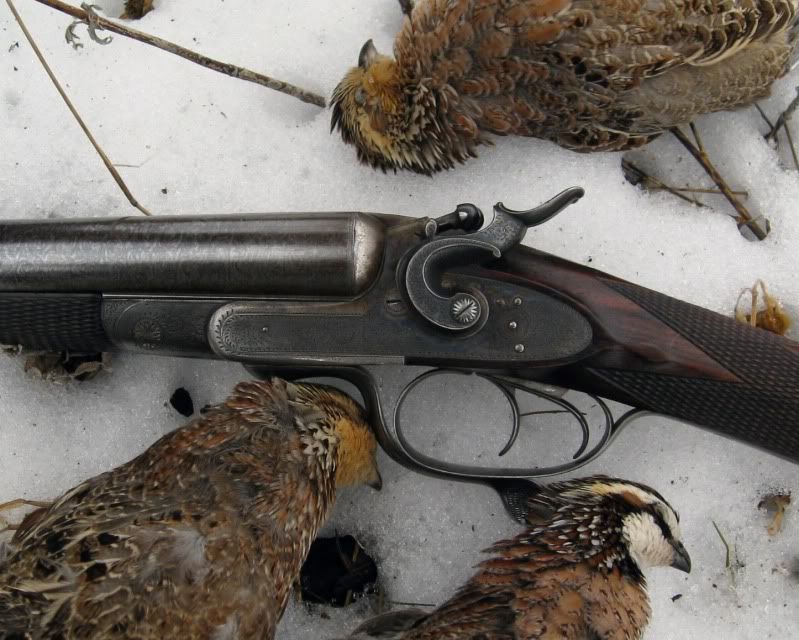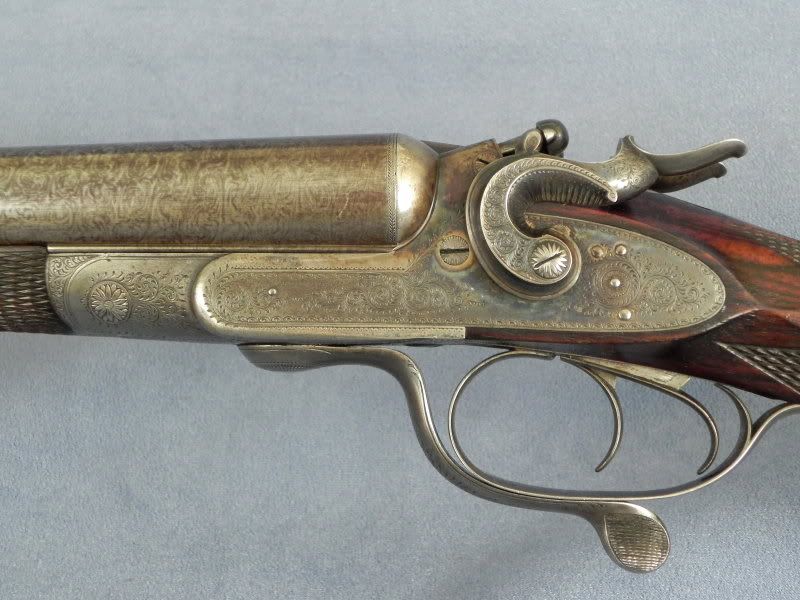Here's my Greener at half cock. It is very easy to quickly bring to full bent. I love that feature but as others have said, it can be confusing with a quick glance whether it is on half or full cause full is only a little more than 1/4" further back. Another reason for non rebounding locks to stick around was some shooters felt the hammers fell harder and had more confidence the primer would fire. Could the Stanton patent fees have kept some of the lower priced guns from using the rebounder?
Half cock

Here is full cock. Notice how little difference between half and full.

Action is Greener's January of 1868 patent he called his "Self-acting Striker" in which the striker is forced back by engaging on a small teat on the hammer. Evidently one of the big problems with early primers was the strikers would pierce the primer and become stuck. This definitely eliminated that problem. (This was W.W. Greener's first patent after he left his father's business and set out on his own.) According to Graham Greener's best guess this gun would date to 1872.


